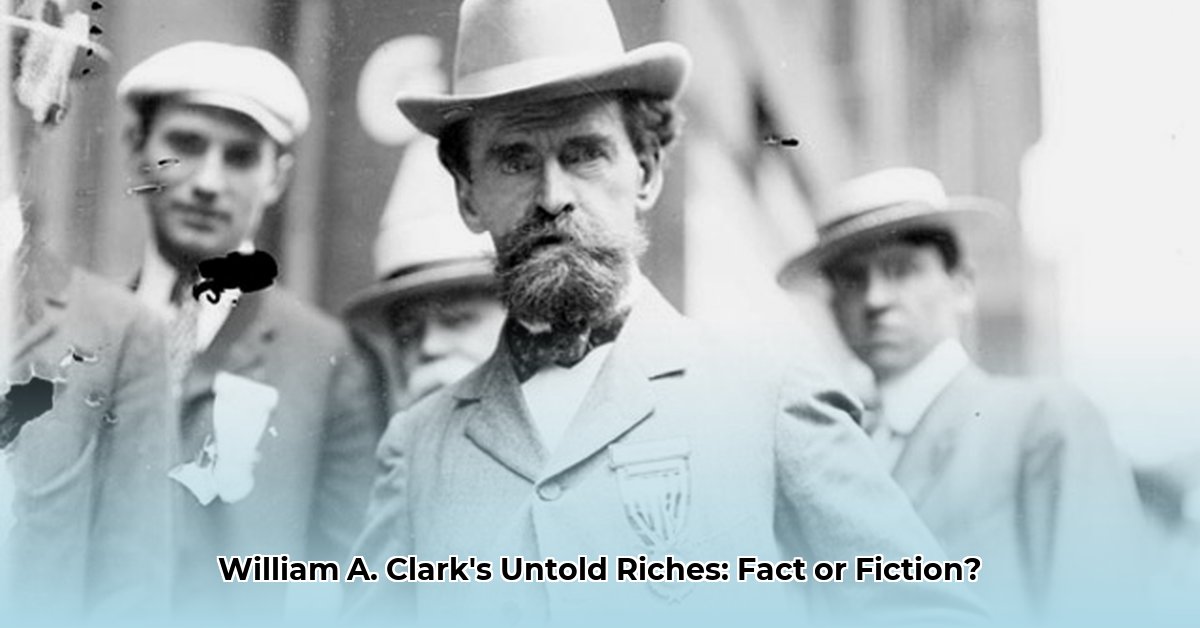
William A. Clark Net Worth: The Rise and Fall of a Copper King
William A. Clark’s staggering net worth, estimated at $300 million upon his death (over $3 billion in today's money), epitomizes the excesses of the Gilded Age. His moniker, "Copper King," reflects his dominance over Montana's copper industry. However, his story transcends mere wealth accumulation; it's a complex narrative of shrewd business, ruthless ambition, and ethically questionable decisions that continue to fascinate and provoke debate among historians and business scholars. How did a man from humble beginnings amass such a fortune, and what is the lasting impact of his legacy? For another example of Gilded Age wealth, see this related biography.
From Humble Beginnings to Copper Baron
Born in a small Maine town, Clark's early life offered no hint of the colossal wealth he would one day command. Yet, he possessed an extraordinary ability to identify and exploit opportunities. He recognized the potential of Montana's untapped copper resources and, through relentless determination and strategic maneuvering, transformed himself into one of the West's most powerful figures. His success wasn't solely about mining; it involved intricate knowledge of the mining process, skillful negotiation, adept workforce management, and, critically, an acute understanding of market dynamics. He expertly navigated the fiercely competitive 19th-century mining world, often outsmarting rivals through a potent blend of strategic brilliance and, undeniably, questionable tactics. Did his success stem from superior skill or a willingness to bend the rules? This question remains central to understanding Clark's rise.
He constructed not just a mine, but an empire. He controlled vast railroad networks, established processing plants, and manipulated markets to maximize profits. His operations were colossal, employing thousands and significantly impacting the regional economy. But what cost did this economic growth exact?
Politics, Power, and Controversy
Clark's immense wealth translated into substantial political influence. He became a major force in Montana politics, leveraging his fortune to sway elections and secure favorable legislation. His controversial election to the U.S. Senate, marked by accusations of bribery and corruption, sparked a significant scandal. This period highlights his intense political maneuvering and a legacy steeped in ethical ambiguities. Even Mark Twain, a keen observer of American society, expressed disapproval of Clark's methods. How did his wealth transform him from a businessman into a political power broker? The answer lies in the blurry lines between private enterprise and political influence during the Gilded Age.
The interpretation of Clark’s political career remains contested. Some historians view him as a shrewd politician who effectively utilized his resources; others depict him as a corrupt manipulator. Regardless of perspective, the inextricable link between Clark's financial success and his controversial political actions remains undeniable.
A Legacy of Contradictions
Despite the controversies, Clark's impact on Montana’s development is undeniable. He significantly shaped its cities and towns, leaving a lasting physical imprint. He also contributed to Las Vegas's early growth. While his philanthropy wasn't as extensive as that of some contemporaries, he still made significant contributions to various projects. However, unlike the enduring empires of Rockefeller or Carnegie, Clark's business kingdom didn't withstand the test of time. His heirs struggled to maintain control, leading to the eventual dismantling of his vast holdings. This raises crucial questions about intergenerational wealth transfer and the importance of sustainable business practices beyond mere accumulation. Was his business model inherently unsustainable, or were external factors more significant in its decline?
Lessons from the Copper King
William A. Clark's life provides a compelling case study for anyone interested in wealth, power, and legacy. It underscores the importance of strategic thinking, adaptability, and opportunity recognition, yet also serves as a cautionary tale about unchecked ambition and the long-term consequences of ethically questionable practices. His story challenges the notion that immense wealth automatically translates into lasting success or a positive legacy. It raises the crucial questions of ethical responsibility and the challenges of intergenerational wealth transfer. His story remains relevant, prompting ongoing historical analysis and contributing to our understanding of the complex dynamics of the Gilded Age.
Key Takeaways:
- Clark’s wealth stemmed from dominating Montana’s copper industry through aggressive business practices and questionable tactics.
- His political career was marred by accusations of corruption and bribery, further cementing a complex legacy.
- While he engaged in philanthropy, it failed to fully offset the lasting negative impact of ethically dubious business methods.